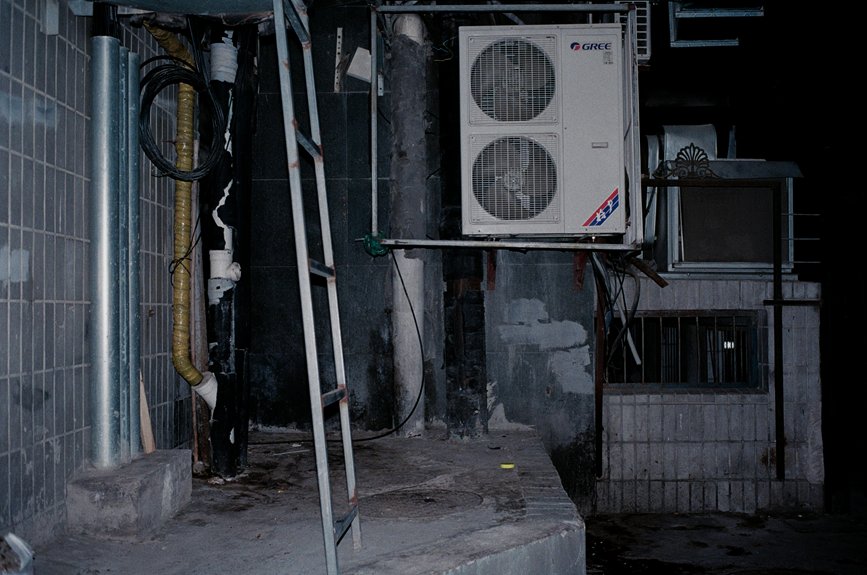Concrete insulation encompasses materials such as spray foam, rigid foam boards, and insulated forms, which significantly enhance energy efficiency by minimising heat transfer. These materials provide excellent thermal resistance, resist moisture, and adhere effectively to irregular surfaces.
Installation requires meticulous planning, sealing of joints, and the incorporation of vapour barriers to optimise performance. Recent innovations, including intelligent forms and eco-friendly options, are continually advancing this field.
To learn more about how concrete insulation can enhance building structures, additional information is available beyond this brief overview.
Types of Concrete Insulation Materials and Their Benefits
There are various types of concrete insulation materials available, each providing distinct advantages for different construction requirements.
Spray foam insulation is applied as a liquid that expands, filling gaps and creating an airtight seal. It boasts high thermal resistance values per inch and effectively resists moisture and air leaks, thereby enhancing energy efficiency. It also has excellent adhesion properties, making it suitable for irregular or hard-to-reach spaces.
Rigid foam board insulation, crafted from polystyrene or polyurethane, offers consistent thermal resistance and is easy to cut and install, particularly on walls and floors. When properly sealed, it also serves as an effective moisture barrier.
Insulated concrete forms (ICFs) consist of modular foam blocks or panels that remain in place during pouring, delivering both insulation and structural integrity.
Each type of insulation contributes to improved comfort and energy savings in various ways.
Factors Influencing Insulation Performance in Concrete Walls
Several factors influence the insulation performance of concrete walls, impacting their ability to conserve energy and maintain comfort levels.
Concrete’s thermal mass plays a significant role in storing and gradually releasing heat, which helps to moderate interior temperatures. High-density concrete provides enhanced thermal mass, although it typically has lower R-values. This balance can contribute positively to overall energy retention.
Moisture and vapour control are vital for ensuring insulation effectiveness. Water ingress can diminish insulation performance and lead to potential damage. The use of vapour barriers is essential, especially in regions prone to high humidity or flooding, as they help prevent humidity-related issues.
Air leaks that occur through cracks can result in significant heat loss, making it important to seal any gaps to improve energy efficiency.
The arrangement of materials also plays a crucial role; for instance, steel ties or the positioning of insulation layers can create thermal bridges, which adversely affect the overall performance.
While increasing the R-value of insulation is beneficial, there are diminishing returns to this approach, as concrete itself isn’t an excellent insulator. Adding more insulation beyond a certain point may not significantly improve energy efficiency due to the thermal properties of concrete. Therefore, a careful design and installation process is essential to optimise insulation in concrete walls.
Effective Installation Techniques and Practical Considerations
Proper installation techniques are vital for maximising the insulation performance in concrete walls. Thorough planning and preparation are essential. Surfaces should be cleaned and dried to ensure good adhesion and moisture control.
Installing vapour barriers, such as polyethylene sheets, with seams overlapped adequately helps reduce moisture migration. Proper vapor barrier installation is critical to prevent mold growth and maintain insulation effectiveness, especially in humid environments.
When selecting insulation, factors such as project type, thermal resistance requirements, and moisture resistance guide the choice between rigid foam, spray foam, or fibreglass. Additionally, considering building codes ensures compliance and long-term durability.
Correct placement is crucial, whether beneath, above, or along walls, while coordinating with structural elements—especially in post-tensioned slabs—protects the insulation during construction. Special care is needed in areas with structural penetrations or fixtures to prevent thermal bridging.
Effective sealing of joints and penetrations prevents leaks, further enhancing insulation efficiency. Using appropriate fasteners or adhesives ensures materials are secured effectively, promoting long-lasting performance.
Innovations and Future Trends in Concrete Insulation Technology
Advancements in concrete insulation technology are rapidly transforming construction practices across the UK, providing smarter and more efficient solutions for buildings. Innovative concepts such as smart precast concrete, which incorporates embedded sensors, deliver real-time data on structural health, temperature, and humidity. These systems enhance safety and reduce costs by anticipating maintenance needs, thereby ensuring that buildings are safer and more durable.
Cutting-edge insulation materials, such as ROCKWOOL Smartrock®, effectively combine thermal, vapour, and air control within a single product, adhering to stringent regulations while safeguarding historic facades. Furthermore, new concrete formulations, including those that utilise CO₂ mineralisation or geopolymer mixes, significantly lower carbon footprints and enhance structural strength. Using sustainable materials not only reduces environmental impact but also aligns with global efforts to combat climate change.
The rise of automation and 3D printing technologies is also noteworthy, enabling the creation of precise, waste-reducing, and customisable insulated forms. These trends are shaping a future of sustainable, energy-efficient, and aesthetically pleasing buildings that promote a sense of community and environmental stewardship.
As the construction industry embraces these innovations, the potential for creating more resilient and responsible structures continues to expand.
Conclusion
In conclusion, selecting the appropriate concrete insulation material is influenced by factors such as climate and building specifications. Ensuring proper installation is crucial for achieving maximum energy efficiency, while ongoing innovations continue to enhance insulation performance.
A solid understanding of these essential elements aids in making informed decisions that improve energy efficiency and structural durability. Keeping abreast of the latest developments can lead to more advantageous choices and enduring benefits for concrete constructions.
Ultimately, careful selection and installation of concrete insulation play a significant role in promoting sustainable and cost-effective building practices across the UK.

